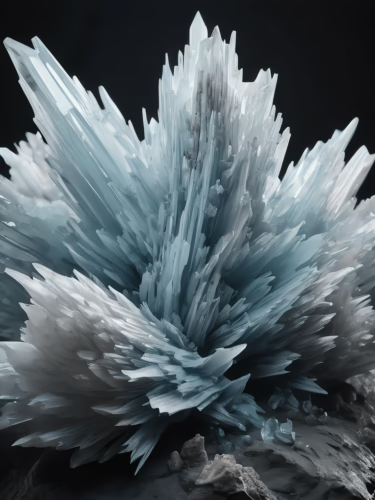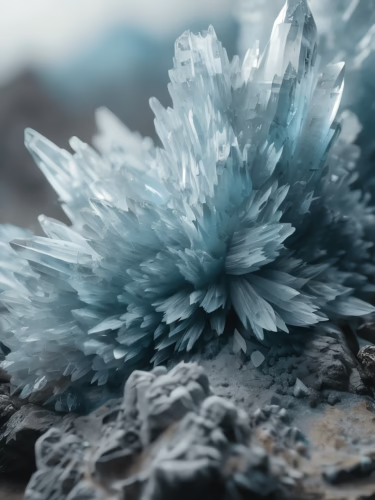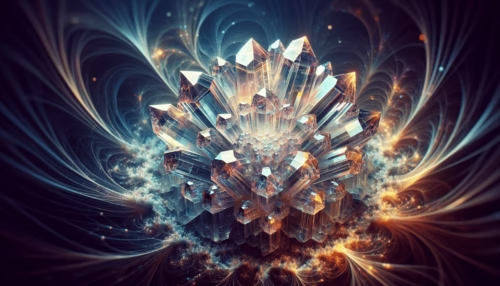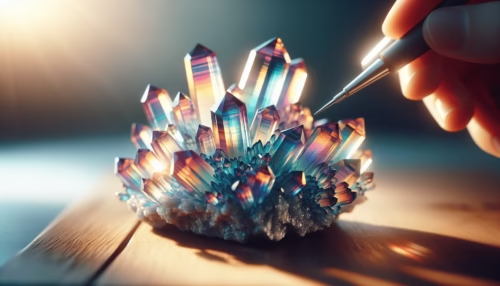What draws individuals to the alluring world of crystal collection? For some, it may be the aesthetic beauty of the stones, while for others, the fascination lies in the historical and scientific aspects of these gemstones. This interest often combines both worlds, blending the allure of nature with human curiosity about its composition. “Understanding Crystal Collection with scientific methods” delves into the methods that turn an ordinary crystal collection into a scientifically organized endeavor.
Table of Contents
Historical Genesis of Crystal Collection
Origins and First Discoveries
The allure of crystals is deeply rooted in history, with the earliest records dating back to ancient Egypt, Mesopotamia, and regions of Asia. Cultures across the world have used crystals for various purposes, from adornment to religious rites. These societies recognized the inherent beauty and potential power within these stones, often attributing them mystical or healing properties.
Evolution of Crystal Appreciation
While ancient civilizations may have used crystals primarily for spiritual or ornamental purposes, the scientific revolution brought a new perspective. By the 16th and 17th centuries, crystal identification and categorization became a subject of academic interest. Scientists began to explore their crystallographic structures, and the methods of collection evolved from mere accumulation to more systematic pursuits.
The Science Behind Crystals
Crystal Structure and Formation
Crystals form through a process known as crystallization, where solids arrange themselves in highly ordered structures. These processes vary, involving cooling from a melt, precipitation from a solution, or transformation from other solid forms. Understanding these processes is essential to appreciate the diverse worlds of crystals.
Mineralogy and Gemology
Studying mineralogy and gemology is crucial for collectors seeking a scientific approach. Mineralogy offers insights into the properties and structures of minerals, while gemology focuses on identifying and evaluating gemstones used primarily in jewelry. Each field contributes different perspectives, shaping a comprehensive understanding of crystal characteristics.

Principles of Crystal Collection
Identifying Authentic Crystals
Identification forms the bedrock of a scientifically sound crystal collection. To ensure authenticity, collectors should familiarize themselves with basic testing methods such as Mohs hardness scale, specific gravity tests, and optical properties. Employ tools like magnifying glasses, light filters, and scales to conduct these tests reliably.
| Test Type | Purpose | Tools Needed |
|---|---|---|
| Mohs Hardness | Scratch resistance | Mohs kit, test materials |
| Specific Gravity | Density measurement | Balance scale, liquid |
| Optical Properties | Refractive indices and spectral analysis | Spectroscope, light source |
Documenting Crystal Findings
Creating a crystal collection that is both comprehensive and informative requires meticulous documentation. Recording data such as the crystal type, origin, ground conditions, and formation process provides valuable insights into each specimen. This documentation can be managed through digital platforms, enhancing accessibility and organization.
Sustainable Collection Practices
Environmental considerations have become increasingly important in the realm of crystal collection. Ethical sourcing and sustainable collection reduce environmental impact, safeguarding ecosystems where crystals naturally occur. Collectors should aim to foster relationships with reputable suppliers and participate in sustainable mining practices whenever possible.
Scientific Techniques in Collection
Microscopy and Spectroscopy
Microscopy allows for a closer examination of crystal surfaces, revealing intricate patterns and inclusions not visible to the naked eye. Meanwhile, spectroscopy examines how crystals interact with light and energy, providing insights into their chemical compositions. Both methods offer invaluable data regarding the origins and characteristics of collected specimens.
X-Ray Diffraction (XRD)
XRD is a powerful analytical tool used to determine the atomic and molecular structure of a crystal. By measuring the angles and intensities of diffracted beams, collectors and scientists can identify materials and their crystallographic structures with precision.
Physical Sampling Methods
Field sampling involves collecting rock and mineral samples directly from geological sites. Essential tools for field sampling include rock hammers, chisels, and handheld GPS devices. Collectors should also record geolocation data, assisting in the creation of a detailed database that supports further scientific research.

Organizing Your Crystal Collection
Storage and Display Solutions
Proper storage and display not only preserve the crystals’ integrity but also enhance their aesthetic appeal. Controlled environments—considering factors such as light exposure, humidity, and temperature stability—ensure the longevity of the collection. Display cases made of acrylic or glass provide protection while allowing viewers to appreciate the crystals’ natural allure.
Classification Systems
A scientific approach to crystal classification involves categorizing based on mineral type, origin, shape, and rarity. Utilizing a standardized labeling system, often in accordance with the International Mineralogical Association, offers clarity and ease when expanding or referencing the collection.
Digital Cataloging
Incorporating digital catalogs simplifies the management of a growing collection. Use softwares designed for mineral collection management, offering features such as photo storage, search functionalities, and automated backup for data protection. Digital cataloging also aids in sharing information within the global collector community.
Case Studies: Successful Crystal Collections
Renowned Collections and Their Curators
Several famous crystal collections serve as examples for aspiring collectors and scientists. The Smithsonian Institution’s gem and mineral collection, for instance, is renowned for its extensive diversity, featuring more than 375,000 mineral specimens. Curators there employ precise documentation and innovative display techniques, making it a model for collections worldwide.
Comparing Methods and Outcomes
By examining various case studies, collectors can witness how different methodologies and focuses lead to distinct outcomes. Whether prioritizing rarity, scientific value, or aesthetic appeal, each collection strategy yields unique results. This comparative analysis offers insights into best practices and potential challenges within the field of crystal collection.

Practical Problem-Solving in Crystal Collection
Overcoming Common Challenges
Collectors often face logistical issues, such as space constraints and transportation of fragile specimens. Innovative solutions, such as modular shelving systems and custom transport containers, can address these concerns effectively. Additionally, technological advancements, such as 3D scanning for remote examinations, offer modern solutions to overcome geographical limitations.
Ethical and Legal Compliance
Adherence to ethical and legal guidelines is paramount to a successful crystal collection. Understanding local and international laws regarding mineral acquisition and trade ensures compliance and prevents legal transgressions. Ethical considerations also involve respecting the cultural heritage of indigenous communities related to certain geological sites.
The Broader Impact of Crystal Collection
Contributions to Science and Industry
Crystal collections contribute significantly to scientific research, providing data crucial to developments in fields like geology, physics, and engineering. Crystals play a vital role in industrial applications, from semiconductors to medical devices, underscoring the importance of maintaining robust, well-documented collections.
Educational and Cultural Significance
Beyond their scientific and industrial applications, crystals hold educational and cultural value. Museums and educational institutions frequently use well-curated collections to inspire fascination and education regarding geological phenomena. By cultivating public interest, these collections uphold the cultural significance of crystals across societies and histories.

Future Prospects and Continuing Developments
Technological Advances in Analysis
As technology progresses, innovations such as AI-driven mineral analysis and enhanced virtual reality experiences promise to transform the landscape of crystal collection. These advancements facilitate more accurate analyses and immersive educational experiences, broadening access and understanding.
Emerging Trends in Crystal Science
Continued research is revealing further insights into crystal properties and potential applications. Scientists are exploring topics like synthetic crystal growth and the role of crystals in quantum computing. Collectors and researchers are encouraged to stay informed about these trends, ensuring that their practices remain at the forefront of scientific discovery.
Engaging with the Community
Engagement within the community fosters communication and growth among collectors, researchers, and enthusiasts. Participate in forums, attend symposia, and contribute to publications to remain abreast of evolving methodologies and collaborative opportunities.
Conclusion
To encapsulate the fundamentals: understanding crystal collection through scientific methods involves a blend of historical appreciation, precise identification, sustainability, and advanced techniques. Each aspect contributes to a more informed, ethical, and deeply satisfying pursuit of understanding these natural treasures.
Not only does this approach enrich personal collections, but it also supports broader scientific endeavors and contributes to educational and cultural narratives. By applying these scientific methods, individuals can enhance their collections, ensuring their efforts are not only rewarding but also impactful. Readers are encouraged to share their collections and insights, promoting a sustaining cycle of knowledge and exploration in the realm of crystal collection.


